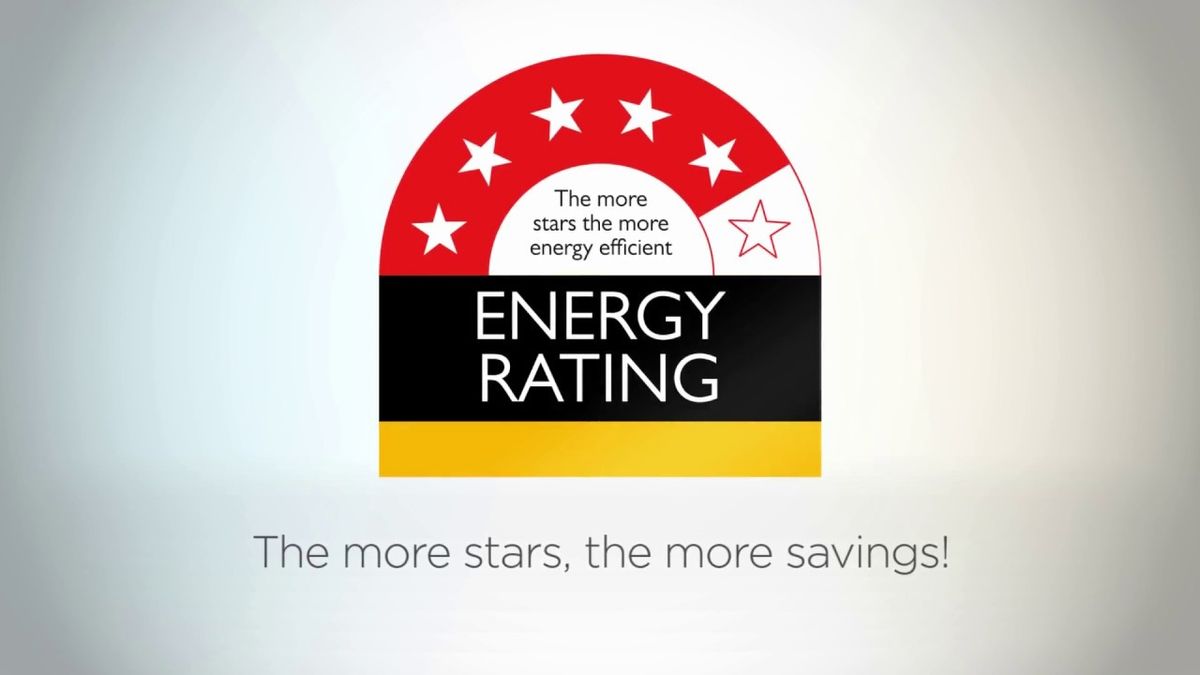Introduction
Australia’s housing market has long been enamoured with the idea of expansive, visually stunning project homes. But while these homes may look impressive from the curb, they often fall short when it comes to energy efficiency, comfort, and livability. As energy costs rise and environmental concerns grow, it’s time to rethink what we value in our homes. Are we prioritising aesthetics over functionality? And at what cost?
Did you know that over 70% of Australian homes have an energy rating of three stars or lower? This means higher energy bills and less comfort for homeowners. It’s clear that the traditional project home model isn’t cutting it. But there’s hope: sustainable design solutions are emerging as a way to create homes that are not only beautiful but also practical, energy-efficient, and environmentally responsible.
In this post, we’ll explore the pitfalls of traditional project homes and introduce a game-changing alternative: the YourHome initiative by the Australian Government.
These designs offer a blueprint for homes that are tailored to Australia’s diverse climates, energy-efficient, and built for modern living. Let’s dive in.
The Pitfalls of Traditional Project Homes in Australia
For decades, Australia’s housing market has been dominated by sprawling project homes that promise luxury and curb appeal. But while these homes may look impressive, they often come with hidden flaws that compromise energy efficiency, comfort, and long-term sustainability. Let’s look at the key issues:
Energy Inefficiency: Bigger Isn’t Always Better
Australian homes have been growing in size, with new homes increasing by 7.6% between 2018 and 2022. But bigger homes mean bigger energy bills. Research shows that the energy required to heat and cool these larger spaces has risen by 10% in the same period (SOURCE). This trend undermines any progress in energy efficiency, as larger homes simply demand more power to maintain comfortable temperatures.
“We’re building bigger homes, but we’re not building smarter homes,” says Andre Stephan & Robert Crawford, a researcher at the University of Melbourne. “Without proper design, these homes become energy guzzlers, costing homeowners more in the long run.” SOURCE
Poor Building Envelopes: The Hidden Culprit
The building envelope—the barrier between your home’s interior and the outside world—is critical for maintaining a stable indoor climate. Unfortunately, many project homes suffer from poorly designed envelopes. Issues like air leaks, inadequate insulation, and thermal bridging (where heat escapes through poorly insulated materials) are all too common. The result? Homes that are freezing in winter, sweltering in summer, and expensive to keep comfortable year-round.
Livability Takes a Backseat
In the race to create eye-catching designs, livability often gets overlooked. Features like floor-to-ceiling windows might look stunning, but without proper shading, they can turn your living room into a greenhouse. Open-plan layouts might feel modern, but without thoughtful airflow design, they can become stuffy and uncomfortable.
Aesthetics are important, but they shouldn’t come at the expense of functionality. A home should work for the people living in it, not just look good in a brochure.
The “Wow Factor” Over Substance
The competitive housing market has led builders to focus on flashy design elements that grab attention. Think complex rooflines, oversized windows, and extravagant facades. While these features might sell homes, they often come with hidden costs—higher construction expenses, increased maintenance, and poor energy performance. In the end, homeowners are left with a house that looks great but doesn’t perform well.
YourHome Designs: A Sustainable Solution
So, what’s the alternative to traditional project homes? Enter YourHome, an initiative by the Australian Government that’s redefining how we think about housing.
YourHome offers free, architecturally designed house plans that prioritise sustainability, energy efficiency, and livability. These designs aren’t just theoretical—they’re practical, adaptable, and tailored to Australia’s diverse climates.
Key Features of YourHome Designs
- Climate-Responsive Design
Australia’s climate varies dramatically, from the tropical north to the temperate south. YourHome designs are tailored to suit these different environments, ensuring your home stays comfortable year-round. For example, homes in hotter regions feature shaded outdoor areas and cross-ventilation, while those in cooler climates maximise solar gain and insulation. - Energy Efficiency Built In
Every YourHome design achieves a minimum 7-star rating under the Nationwide House Energy Rating Scheme (NatHERS). To put that into perspective, a 7-star home can reduce energy consumption by up to 50% compared to a standard 3-star home. That means lower energy bills and a smaller carbon footprint. - Adaptability for Real Life
YourHome designs aren’t one-size-fits-all. They can be customised to suit your lifestyle, block orientation, and local council requirements. Whether you’re building on a narrow urban lot or a sprawling rural property, these designs offer flexibility without compromising sustainability. - Common Materials, Uncommon Results
One of the best things about YourHome designs is their practicality. They use readily available construction materials and techniques, keeping costs manageable while still delivering high performance. This makes sustainable living accessible to more Australians.
Benefits Over Traditional Project Homes
- Enhanced Livability: Thoughtful layouts and passive design principles ensure your home is comfortable and functional. Imagine a living room that stays cool in summer without blasting the air conditioner, or a bedroom that’s warm and cosy in winter without cranking up the heater.
- Reduced Environmental Impact: By focusing on energy efficiency and sustainable materials, YourHome designs minimise the carbon footprint of both construction and daily living. It’s a win for you and the planet.
- Long-Term Cost Savings: While the upfront cost of a sustainable home might be comparable to a traditional project home, the long-term savings are significant. Lower energy bills, reduced maintenance, and potential government incentives make these designs a smart financial choice.
Why YourHome Designs Matter
The YourHome initiative isn’t just about building better homes—it’s about changing the way we think about housing. By prioritising sustainability and livability, these designs challenge the status quo and offer a blueprint for the future.
YourHome proves that sustainable design doesn’t mean sacrificing style or comfort. It’s about creating homes that work for livability and comfort.
Why Australia Needs Sustainable Home Designs
The Australian housing market is at a crossroads. On one hand, we have traditional project homes that prioritise aesthetics over functionality, leaving homeowners with high energy bills and uncomfortable living spaces.
On the other, we have sustainable designs like those offered by YourHome—homes that are energy-efficient, adaptable, and built for modern living. The choice is clear: it’s time to embrace sustainable home designs. Here’s why:
Practicality and Adaptability For Real Life
Sustainable home designs are all about practicality. They’re built to adapt to your lifestyle, whether you’re a growing family, a couple downsizing, or someone who works from home. Features like open-plan living areas, multipurpose rooms, and thoughtful spatial arrangements ensure your home evolves with you.
For example, a YourHome design might include a study nook that can later become a nursery, or a flexible living space that works equally well for entertaining or relaxing. These designs aren’t just houses—they’re homes that grow with you.
Sustainability and Environmental Responsibility
Let’s face it: climate change is one of the biggest challenges of our time, and the way we build our homes plays a significant role. Sustainable home designs reduce energy consumption, conserve water, and use eco-friendly materials/methods. By incorporating passive solar design, efficient insulation, and natural ventilation, these homes minimise reliance on artificial heating and cooling, slashing greenhouse gas emissions.
Designed for Modern Living
Modern homeowners want more than just a roof over their heads. They want homes that enhance their quality of life. Sustainable designs deliver on this by prioritising natural light, indoor air quality, and a connection to the outdoors. Imagine waking up to sunlight streaming through your windows, or enjoying a cool breeze without needing to turn on the air conditioner. These are the kinds of experiences sustainable homes make possible.
Economic Benefits
One of the biggest misconceptions about sustainable homes is that they’re expensive. While the upfront costs might be comparable to traditional homes, the long-term savings are substantial.
A 7-star NatHERS-rated home can save homeowners thousands of dollars on energy bills over its lifetime. Add in potential government incentives for sustainable building practices, and the financial case becomes even stronger.
But here’s the best part: sustainable design isn’t about sacrifice. It’s about creating homes that are better for people and the planet—homes that are energy-efficient, comfortable, and built to last.
And that’s something we can all get behind.
The problem with many traditional project builders is that they take a one-size-fits-all approach. Much like a fast-food chain, they serve the same design everywhere, with little to no consideration for your specific needs, location, or lifestyle. Sustainable home designs, on the other hand, are tailored to your circumstances, ensuring your home works for you, not against you.
How to Explore and Utilise YourHome Designs
Ready to take a look at more sustainable living? The YourHome initiative makes it easier than ever to build a home that’s energy-efficient, comfortable, and tailored to your needs. Here’s a step-by-step guide to exploring and using these designs:
Start with the YourHome Website
The first stop on your journey is the YourHome website. Head to the House Designs section to browse a range of free, architecturally designed plans. These designs are tailored to different climates and lifestyles, so you’re sure to find one that suits your needs.
Pro Tip: Use the filters to narrow down your search by climate zone, house size, or specific features like passive solar design.
Understand the Design Packs
Each design comes with a comprehensive design pack, which includes everything you need to get started:
- Design Options: Specifications for different NatHERS star ratings, appliance recommendations, and key design features.
- Technical Drawings: Detailed floor plans, site plans, elevations, and window/door details.
- Builder Guidance: Tips for working with your builder or designer to bring the plans to life.
These resources are designed to make the process as smooth as possible, even if you’re new to sustainable building.
Customise for Your Needs
While the base designs are thoughtfully crafted, your home should reflect your unique lifestyle and site conditions. Here’s how to make it your own:
- Optimise Orientation: Work with an architect or designer to ensure your home is positioned to maximise natural light and ventilation.
- Choose Materials: Select sustainable, locally sourced materials that align with your budget and aesthetic preferences.
- Adapt to Local Regulations: Your builder can help ensure the design meets local council requirements and building codes.
Work with the Right Professionals
Building a sustainable home is a team effort. Here’s who you’ll need on your side:
- Architect or Designer: To adapt the plans and ensure they meet your needs.
- Builder: Look for one with experience in sustainable construction.
- Energy Assessor: To confirm your home meets the desired NatHERS star rating.
Did you know? Many builders and designers are now specialising in sustainable homes, making it easier than ever to find the right team for your project
Take Advantage of Incentives
Building a sustainable home can come with financial perks. Check out government incentives and rebates for energy-efficient features like solar panels, insulation, and water-saving systems. These can help offset upfront costs and make sustainable living even more affordable.
Conclusion
Australia’s housing market is at a turning point. Traditional project homes, with their focus on aesthetics over functionality, have left homeowners struggling with high energy bills, uncomfortable living spaces, a reliance on HVAC and a significant environmental footprint. But there’s a better way forward.
The YourHome initiative offers a blueprint for homes that are not only beautiful but also sustainable, energy-efficient, and designed for modern living. By embracing these designs, Australians can enjoy:
- Lower energy bills thanks to 7-star NatHERS ratings and passive design principles.
- Enhanced comfort with homes that stay warm in winter and cool in summer.
- A smaller environmental footprint through the use of sustainable materials and energy-efficient features.
- Long-term savings on utility bills and maintenance costs.
But the benefits go beyond individual households. By choosing sustainable home designs, we’re contributing to a larger movement—one that prioritises environmental responsibility, resource conservation, and a better quality of life for future generations.
So, whether you’re planning to build a new home or renovate an existing one, consider exploring the YourHome designs. Visit the YourHome website today to browse free, architecturally designed plans and take the first step toward a home that’s as kind to the planet as it is to your wallet.
FAQ
- What is the Nationwide House Energy Rating Scheme (NatHERS)?
- NatHERS is a star rating system that measures the energy efficiency of a home based on its design, materials, and climate.
- Are YourHome designs suitable for all Australian climates?
- Yes, the designs offer tailored options to suit different climates across Australia.
- Can I customise a YourHome design to fit my specific needs?
- Yes, the designs can be customised to suit your needs, lifestyle, block orientation, and local requirements.
- Do these designs comply with current Australian building standards?
- Yes, they meet new Australian building standards, including achieving a minimum thermal performance rating of 7 stars under NatHERS.
- How can I access the YourHome designs?
- The designs are available for free download on the YourHome website.
- Will building a YourHome design save me money in the long run?
- Yes, higher energy ratings reduce the need for heating and cooling, leading to lower energy bills over time.
- Are the materials specified in the designs readily available?
- Yes, the designs use common construction materials and techniques to keep costs down.
- Can these designs be adapted for sloping or irregularly shaped blocks?
- While the designs are flexible, consulting with a building professional is recommended to adapt them to challenging sites.
- Do the designs include considerations for future adaptability?
- Yes, features like liveable and adaptable home provisions are included to ensure long-term usability.
- How do I find a builder familiar with YourHome designs?
- Many builders are aware of sustainable design principles; it's advisable to discuss your chosen design with potential builders to ensure compatibility.
Further Reading























